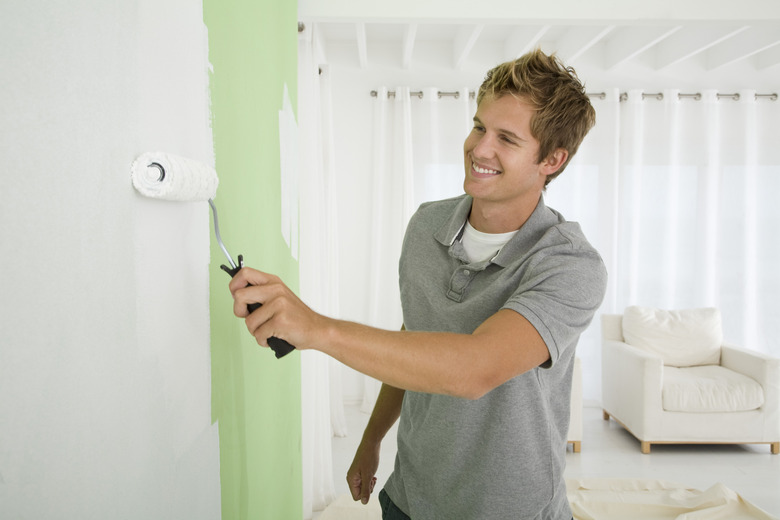Can I Put Clear Epoxy Over Paint?
It is possible to cover and protect your painted finish with clear epoxy, such as on a floor, but you may find it difficult to find a manufacturer that will give you a guarantee regarding its durability. The problem is that proprietary processes and environmental factors vary widely. Some manufacturers will test their own products for compatibility only within their own brand.
Painting with Epoxy
If you are working on a floor or other concrete surface, remove anything that is loose to ensure the surface under the epoxy will be solid. Patch any cracks or holes. On wood, remove loose areas of paint and spackle, as necessary.
If you have just painted the surface, within the last couple of days, wash it with a mild detergent and allow to dry well. If the paint is old, and you are working on concrete, sand the surface with a course sandpaper, such as 60 grit. This will provide a surface for the epoxy to hold on to, and increase the chances for good adhesion. For wood, use a finer grit sandpaper. You may not want to sand the paint if you have the color you want down already as you can scuff the finish. If you are looking to create a distressed finish, however, this may be an option.
You could also use a colored rather than a clear epoxy paint that you can apply in one coat over your original painted surface. These come both in kits and individual gallons. If you go with the kit, do not use the acid solution in the package if you are working indoors, as it needs to be thoroughly rinsed. You can get good results by sanding and a thorough cleaning with a mild cleanser. A one-part epoxy kit comes in a single can and will usually provide a satin finish. A two-part kit needs to be mixed, and will give a higher gloss finish. One-part epoxy is cheaper and a little easier to use as you can work directly from the can, but the finish will not be as durable. Two-part epoxy provides a tougher, shinier surface, but you will not get as much square footage from the kit as you will from a can.
